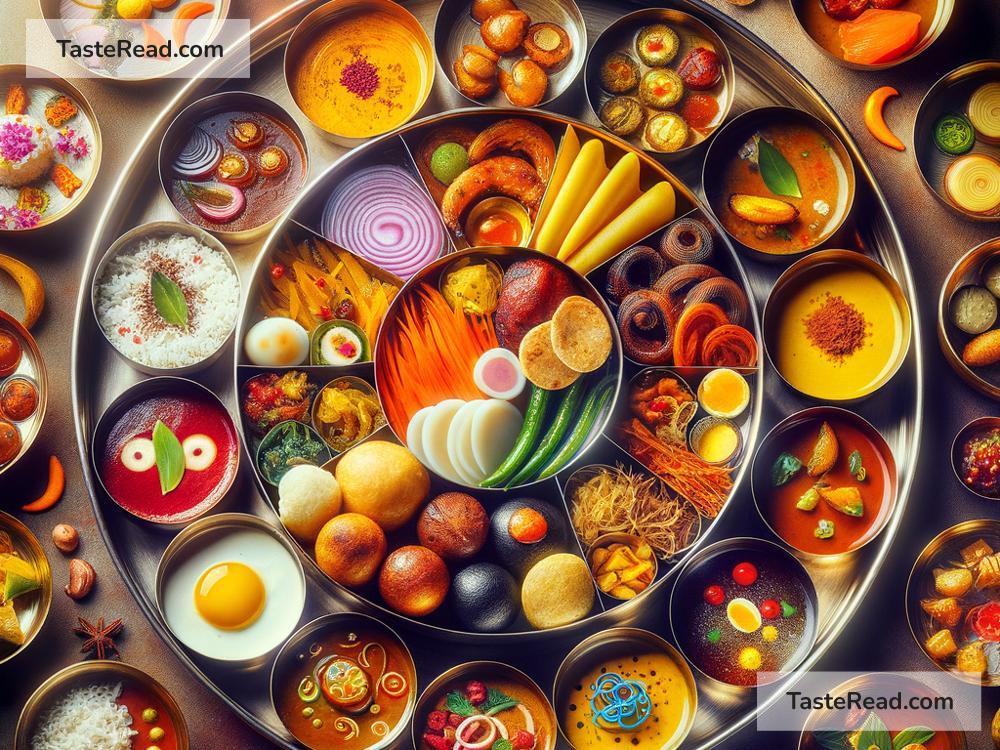Exploring Traditional Indian Lunch Thalis: A Culinary Journey
Have you ever been on a culinary adventure that took you through an array of flavors, colors, and textures all on a single plate? If not, then diving into the world of traditional Indian lunch thalis is something you need to experience. Indian cuisine is known for its diversity, vibrancy, and richness, and nothing signifies this more beautifully than a traditional thali. Let’s embark on a journey through the delightful and wholesomely satisfying realm of Indian lunch thalis.
What is a Thali?
“Thali” is a Hindi word that translates to “plate.” However, in the context of Indian cuisine, it represents much more than just a plate. A thali is a round platter serving a variety of dishes, which offers a complete meal combining different flavors, textures, and nutrients. Every region in India has its unique version of a thali, reflecting the cultural diversity and culinary richness of the country.
The Key Components of a Thali
While the specific dishes in a thali can vary greatly depending on the region, a conventional Indian thali typically includes:
- Rice or Indian Breads: The staple, which could be rice or different types of Indian bread like roti, naan, or paratha, serves as the base of the meal.
- Dal (Lentils): A protein-rich lentil stew, dal is a vital part of the thali, bringing warmth and comfort to the meal.
- Sabji (Vegetable Curry): At least one or two types of vegetable preparations are included, ranging from dry to gravy-based dishes.
- Pickle and Chutney: These are crucial for adding tangy or spicy flavors to the meal, enhancing the taste of the other dishes.
- Papad (Crispy Flatbread) and Salad: A crunchy addition to the thali, along with a fresh salad to add a crisp texture.
- Dessert: A sweet treat to end the meal on a sweet note, which could be anything from gulab jamun to kheer (rice pudding).
Exploring the Varieties
Across the vast expanse of India, thalis take on different characters, embodying the essence of each region’s culinary philosophy. Here’s a look at a few noteworthy ones:
North Indian Thali
A North Indian thali is rich and hearty, with creamy curries, dal makhani (a buttery lentil dish), paneer (cottage cheese) preparations, and fluffy naans or rotis. A sweet dish like gulab jamun or rasmalai often concludes the meal. The flavors are bold, with an emphasis on spices and dairy-based ingredients.
South Indian Thali
Venture down south, and the thali transforms with rice taking center stage. Accompanied by sambar (a tangy lentil and vegetable stew), rasam (a spicy and sour soup), dry and gravy-based vegetable dishes, and a variety of chutneys and pickles. The meal often starts with a sweet dish, setting a different tone from its northern counterpart.
West Indian Thali
In the western parts of India, the thali features a balance of sweet and spicy flavors. A Gujarati thali, for example, is distinguished by its delicious combination of sweet dal, rice, vegetable curries, farsan (snacks), and sweet dishes like shrikhand (sweet, strained yogurt).
East Indian Thali
The eastern thali, say a Bengali thali, offers a plethora of flavors with rice, fish curry, vegetable preparations, and sweets like rasgulla. The flavors are subtle yet distinct, with an emphasis on fish, rice, and a love for sweets.
Why You Should Try a Thali
Trying a thali is not just about eating; it’s about immersing yourself in a cultural and culinary experience. It’s a way to explore the diversity of Indian cuisine in a single meal. A thali ensures you get a bit of everything – from the staple grains and proteins to the myriad flavors of vegetables, pickles, and sweets. Furthermore, it’s a balanced meal that combines nutrition with indulgence, ensuring you leave the table satisfied in every sense.
Where to Find Them
Indian lunch thalis are widely available in Indian restaurants across the world. If you’re in India, almost every region offers its unique version in local eateries, giving you a genuine taste of regional culinary traditions.
Conclusion
Embarking on a journey through the world of traditional Indian lunch thalis is like exploring a treasure trove of flavors, traditions, and culinary craftsmanship. It’s an experience that connects you with the rich cultural tapestry of India through the universal language of food. So, the next time you have the opportunity, dive into the delightful world of thalis and let your taste buds embark on a journey they won’t forget.


